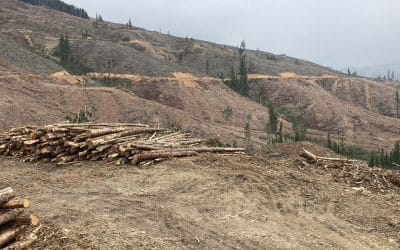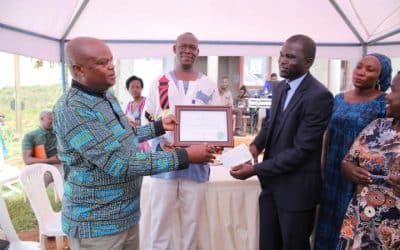Isis Alvarez- Global Forest Coalition
The very first workshop on Ecosystem-based adaptation (EbA) and Ecosystem-based Disaster Risk Reduction (DRR) took place from 28 September to 2nd October in Johannesburg, South Africa. Experts from different fields and from all around the world attended this exchange organized by the Convention on Biological Diversity (CBD) and supported by the government of South Africa, Germany, Sweden and the European Union. It was organized according to decision XII/20 in paragraph 7 in the CBD.
Since this workshop constituted the very first workshop on EbA & Eco-DRR a lot was discussed around what constituted EbA & Eco-DRR and what not, together with other very key issues discussed throughout the week that though seemed very logic for some coming from specific fields of expertise, were not fully understood by all the same way. This provided room for very lively discussions. A comprehensive background document was circulated previous to the workshop which provided very good insights into the different items in the agenda. Most participants made a presentation of their fields of work in relation to EbA & Eco-DRR, coming from governments, UN and intergovernmental agencies, academia and research institutions, NGOs and IPOs.
The different presentations and discussions strengthened the notion of EbA & Eco- DRR as effective tools for climate change mitigation and adaptation and there was common understanding of these approaches as more desirable than ordinary ways of dealing with climate change. For instance, there was a strong recognition of healthy wetlands and mangrove ecosystems as key elements in EbA & Eco-DRR. Different examples from different regions of the world corroborated the importance of mangroves in reducing impacts from floods, tsunamis, etc. In this regard, restoration comes as an important cost-effective strategy that should be promoted. This would constitute, according to the workshop content, an example of ‘green strategies’ vs. ‘gray strategies’ that relate to built infrastructure.
Some presentations referred to combined ‘green’ and ‘gray’ technologies for successful EbA & Eco-DRR. Hence, workshop conclusions included that EbA is just part of broader strategies for addressing climate change. However, more in depth discussions questioned whether strategies believed as ‘green’ but that could have potential severe impacts such as tree plantations of alien species, could constitute an example of ‘good’ EbA. In fact, one of the presentations depicted how in some plantations in South Africa there are now cameras in order to detect forest fires meaning that the ‘strategy’ implemented is not really addressing the problem is supposed to solve but instead is adding more problems. Thus, not all so-called ‘green technologies’ would result in effective EbA & Eco-DRR despite the general believe that these could constitute examples of ‘no regret strategies’, term that was also challenged due to the long-term effectiveness of such strategies.
The issue of perverse incentives and the potential of EbA & Eco-DRR to tackle these came up several times, after all, the EU has committed to ‘divest from measures which have negative effects on biodiversity and ecosystem services’. An example of perverse policies, in this case by donors, was brought up regarding a REDD+ project in Paraguay funded by USAID and implemented by WWF where money destined to deforestation couldn’t be used for adaptation.
Stakeholder engagement at all levels was seen as an important issue that required further discussion. The workshop conclusions recognized that concerned local communities, practitioners and researchers should be involved in projects to make sure the best knowledge is used. Also that co-management, collaboration and flexibility are needed to build ownership and trust [1]. In the same line, private sector engagement to EbA & Eco-DRR was strongly desirable for most participants but further thought had to be given as their strong responsibility in the climate change problematic was recognized. Unfortunately, time didn’t allow for a deeper discussion but there was a common understanding of having guidelines in place for how they should engage.
Item 6.2 in the agenda discussed ‘the contributions of indigenous peoples and local communities to ecosystem approaches’. Some conclusions included: the need for supporters/donors to understand local contexts; ensure FPIC before any project is planned; ensure better cooperation at all levels; recognize important role of traditional knowledge and the need to safeguard it, among others.
Thus, EbA & Eco-DRR have important potential for providing multiple benefits, contribute to climate change adaptation and mitigation, increase resilience and reduce vulnerability, empower people, make economic sense as it is usually cheaper, be ready to use and easily accessible. Several international agreements could very well use both EbA & Eco-DRR as they address the crucial links between climate change, biodiversity and sustainable resource management, and by preserving and enhancing ecosystems. However, it is recognized that there is an information gap that needs to be addressed in order to make EbA & Eco-DRR relevant tools in the different proposals for tackling climate change.
[1] Further information of preliminary workshop conclusions can be found via https://www.cbd.int/climate/doc/flyer-climate-2015-10-20-en.pdf
*Isis Alvarez is a Gender Advisor and Campaigner




